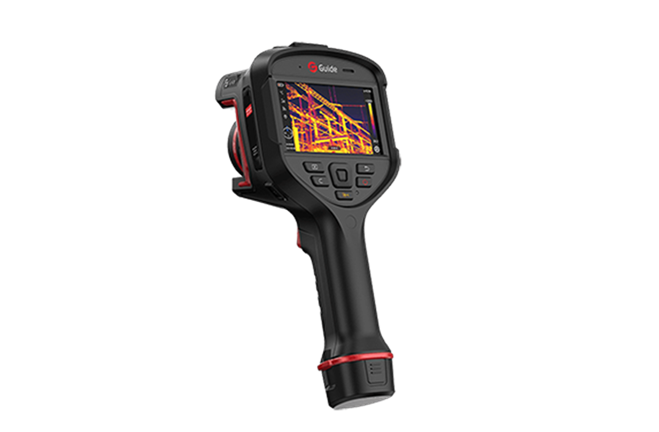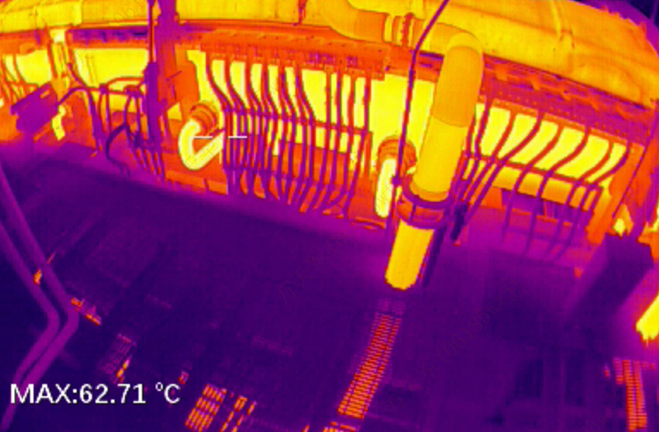Thermal imaging cameras have become an essential tool in a variety of industries, from home inspections to military applications. Their ability to detect heat signatures makes them invaluable for detecting hidden issues like insulation defects, moisture leaks, and electrical faults. However, many people wonder: Can thermal imaging cameras see through walls? This question arises frequently, especially when people are trying to assess the capabilities of thermal imaging cameras for different types of inspections or investigations.
Understanding Thermal Imaging Technology
Thermal imaging cameras detect infrared radiation (heat) emitted by objects and convert that radiation into an image. This is commonly known as a "thermogram." By using a thermal sensor, these cameras can show temperature variations in the surface of a material, which can help identify hot or cold spots. While thermal imaging cameras can’t literally see through solid walls like X-rays, they can still provide valuable insights into what’s happening inside those walls.
Unlike traditional visual cameras, thermal cameras don’t rely on visible light; they use infrared wavelengths that can pass through certain materials such as drywall, insulation, and wood. This ability makes thermal imaging cameras powerful tools in identifying problems that may be hidden beneath the surface.
How Thermal Imaging Cameras Work for Building Inspections
When it comes to building inspections, thermal imaging cameras are primarily used to detect temperature discrepancies within a structure. These discrepancies can indicate potential issues such as:
1.Moisture Intrusion:
Leaks or water damage often create cold spots on surfaces, which can be detected using thermal imaging. In many cases, moisture can be trapped inside walls, and thermal imaging can reveal the presence of water before it causes further damage.
2.Insulation Gaps:
Poor insulation can result in heat loss or gain, making certain areas of a wall warmer or cooler than others. A thermal imaging camera can highlight these inconsistencies, helping inspectors pinpoint areas where additional insulation may be needed.
3.Electrical Problems:
Overheating electrical components, such as faulty wiring or overloaded circuits, can be identified with a thermal camera. Hot spots can indicate electrical hazards that could be hidden behind walls or under floors.
4.Structural Issues:
Thermal imaging can sometimes detect areas where materials have shifted or settled, causing unusual temperature patterns. This could suggest structural issues like cracks in the foundation or walls.
Can Thermal Imaging Cameras See Through Walls?
The short answer is no, thermal imaging cameras cannot see through walls in the same way X-rays do. Thermal cameras cannot penetrate dense materials like concrete or metal. However, they are capable of detecting temperature differences that arise on the surface of walls due to underlying issues. These temperature variations often result from the behavior of materials inside the wall.
For instance, a wall that has a hidden pipe with water running through it will have a different temperature than the surrounding material. Similarly, a cavity within the wall may cause a thermal gradient, which will be visible on a thermal camera. This makes thermal imaging particularly useful for detecting issues like leaks, insulation gaps, or areas of heat loss within a building.
However, it is important to note that the success of thermal imaging depends on the material composition of the wall. Materials like drywall or wood allow infrared radiation to pass through more easily than dense materials like concrete, brick, or metal. Therefore, while thermal imaging is highly effective on certain building materials, it may have limited effectiveness on others.
Advantages of Using Thermal Imaging Cameras for Building Inspections
1.Non-Invasive Inspection:
One of the biggest advantages of using thermal imaging cameras is that they provide a non-invasive method of inspection. Inspectors can evaluate the condition of walls, ceilings, and floors without having to tear anything apart. This makes thermal cameras ideal for routine maintenance checks or quick problem assessments.
2.Early Detection of Issues:
Thermal cameras can help detect issues early, often before they become significant problems. By identifying temperature anomalies that indicate issues such as moisture or poor insulation, thermal imaging can prevent costly repairs and ensure the safety and longevity of a building.
3.Efficiency and Time-Saving:
Thermal imaging allows inspectors to scan large areas quickly and efficiently. Instead of manually checking each section of a wall or structure, inspectors can scan a broad area and immediately identify any irregularities that need further attention.
4.Versatility:
Thermal imaging cameras are versatile tools that can be used to inspect various parts of a building, from roofs and walls to floors and plumbing. They are also portable and easy to use, making them accessible for both professional inspectors and DIY enthusiasts.
Choosing the Best Thermal Imaging Camera for Building Inspections
When selecting the best thermal imaging camera for building inspections, there are several factors to consider. Resolution, sensitivity, and temperature range are key specifications to look out for. Higher resolution allows for clearer images, while sensitivity ensures that even the smallest temperature differences can be detected. Temperature range is important because some inspection tasks may require the ability to detect extreme heat or cold.
Some of the best thermal imaging cameras for building inspections also come with additional features like video recording, Wi-Fi connectivity, and thermal analysis software, which can help inspectors document and analyze the findings more effectively.
If you’re looking for a reputable thermal imaging camera manufacturer, it’s essential to research companies that have a track record of producing high-quality, reliable products. Look for manufacturers that offer excellent customer support, warranty, and training, as these are crucial for ensuring that your thermal imaging camera performs well over time and provides accurate results.
Conclusion
In conclusion, thermal imaging cameras are incredibly useful for building inspections, particularly when it comes to detecting hidden issues like moisture damage, insulation gaps, and electrical problems behind walls. While they cannot "see through walls" in the same way that X-rays can, they can provide valuable insights into what’s happening within a structure by revealing temperature discrepancies on surfaces. By choosing the best thermal imaging camera and working with a trusted thermal imaging camera manufacturer, you can enhance the efficiency and effectiveness of your building inspections and ensure the safety and integrity of your property.
Thermal imaging technology is undoubtedly a game-changer in the field of building inspections, providing a safe, efficient, and non-invasive method of identifying potential problems before they escalate into costly repairs. Whether you are a professional inspector or a DIY homeowner, investing in the right thermal imaging camera can provide long-term value and peace of mind.













.svg)



_fuben.jpg)

